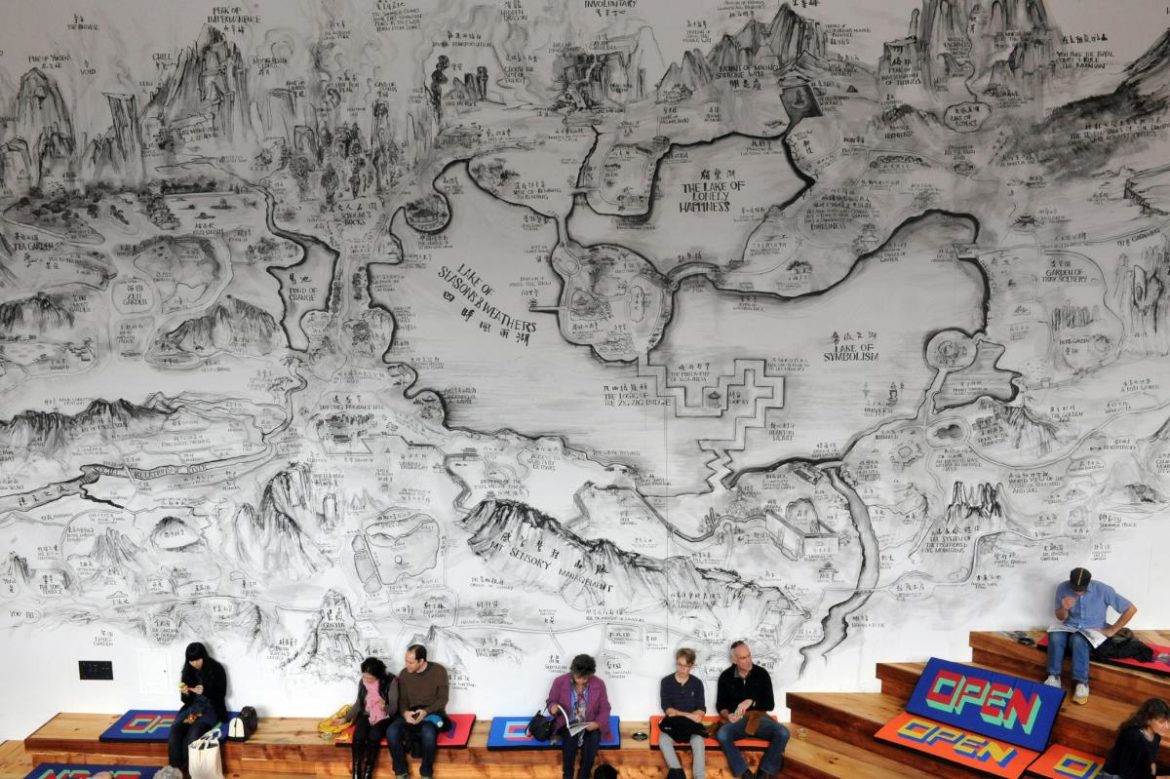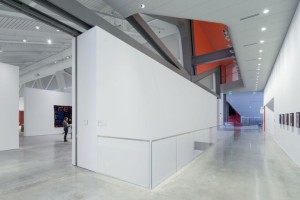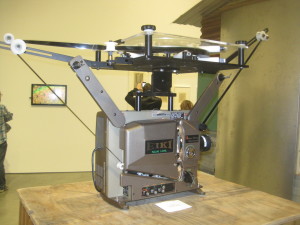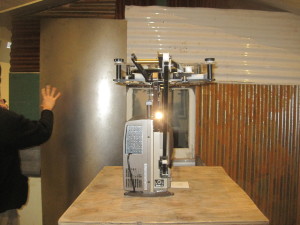This past Sunday was “Community Day” at the Berkeley Art Museum and Pacific Film Archive (BAMPFA), marking most people’s first opportunity to take a look inside the newly redesigned space on downtown Berkeley’s Center Street. It’s been years in the making – the previous location opened in 1964 but was shuttered at the end of 2014, due to seismic concerns – and hundreds turned out to see what rock star design firm Diller Scofidio + Renfro (and $112 million in privately raised funds) had come up with.
Architectural hot take: the new BAMPFA is gorgeous. Retrofitting the museum and theaters into the 1939 UC printing plant turns out to be a wonderfully quirky adaptive use: the museum is angular, airy, and clean, filled with natural light and vaguely futuristic, while also hearkening back to its original industrial use in interesting ways.
In Sam Lubell’s essay in Sunday’s commemorative program, he writes, “the tension between styles and atmospheres plays out more explicitly as you follow what Renfro calls a ‘cinematic’ progression of space,” which is less of a stretch than it sounds. This sense is amplified by installations like a projector screening film into a pre-fab shack on the ground level, a “film house” inside a museum dedicated in part to housing film. Outside, the existing Art Deco structure is wrapped in twisting stainless steel, giving a sense, as Lubell also notes, of “torqued filmstrip.” One side of the facade features an exterior screen to project films and images to a small courtyard. The BAMPFA seems to have taken the “PFA” part of the acronym pretty seriously.
The new space has two theaters: a 232-seater boasting a custom-designed sound system and sleek black paneling throughout, equipped to screen everything from archival prints to 4K digital projection, and a tiny 32-seat theater that director Lawrence Rinder notes “will be available to students and other researchers, while also serving as a venue for public film programs.” (When I was there, the smaller theater was inscrutably showing a short film depicting open heart surgery, a beautiful / kind-of-icky vision from the inside of a human body. Was this programming choice meant to reflect the changes on display? Did the parents who brought their kids in there realize what they were getting into? Who knows! The seats were comfortable and the sound was great, in any case.) 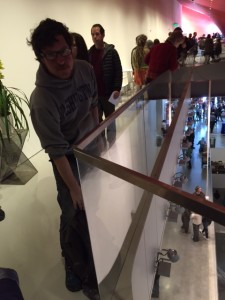
(Me, using my fear of heights to try and forget about the open heart surgery movie I just watched)
On the lowest level, you’ll find the Film Library and Study Center, a huge collection of cinematic ephemera that now has the added benefit of being more accessible and under the same roof as the museum itself.
There’s already a pretty robust slate of screenings and film series for the coming months, from an inaugural showing of The Seventh Seal through retrospectives on everyone from Nuri Bilge Ceylan to Nicholas Ray, along with a slew of film education courses. It all looks tremendously promising and exciting.
Most in attendance on Sunday seemed to share that view, and the line of folks hoping for stand-by tickets to check it out extended way down the block. Berkeley being Berkeley, there was of course a protest: the Student Labor Committee seized the opportunity to draw attention to wage theft and exploitation of contract workers at the university and to contrast it with the expense of the new space. Important points to be sure, though others were quick to note that the space was financed with private funds and doesn’t employ any contract workers. Still, the image of students posed with placards against a museum wall – a place where one goes (hopefully) for active engagement with the world through art and creative intervention – seems entirely appropriate. Good for them.
In any case, the building itself is an impressive achievement, and light years ahead of what the East Bay Express called the “quintessential piece of brutalist architecture” that formerly housed all this amazing stuff. I imagine I’ll be a regular visitor here – upcoming highlights include a bunch of Guy Maddin screenings, Ousmane Sembène’s revered Black Girl, and a series of Japanese masterpieces in the spring. The new BAMPFA is architecture and design worthy of its collection and mission, and cinephiles throughout the Bay Area should consider ourselves lucky to have it.

